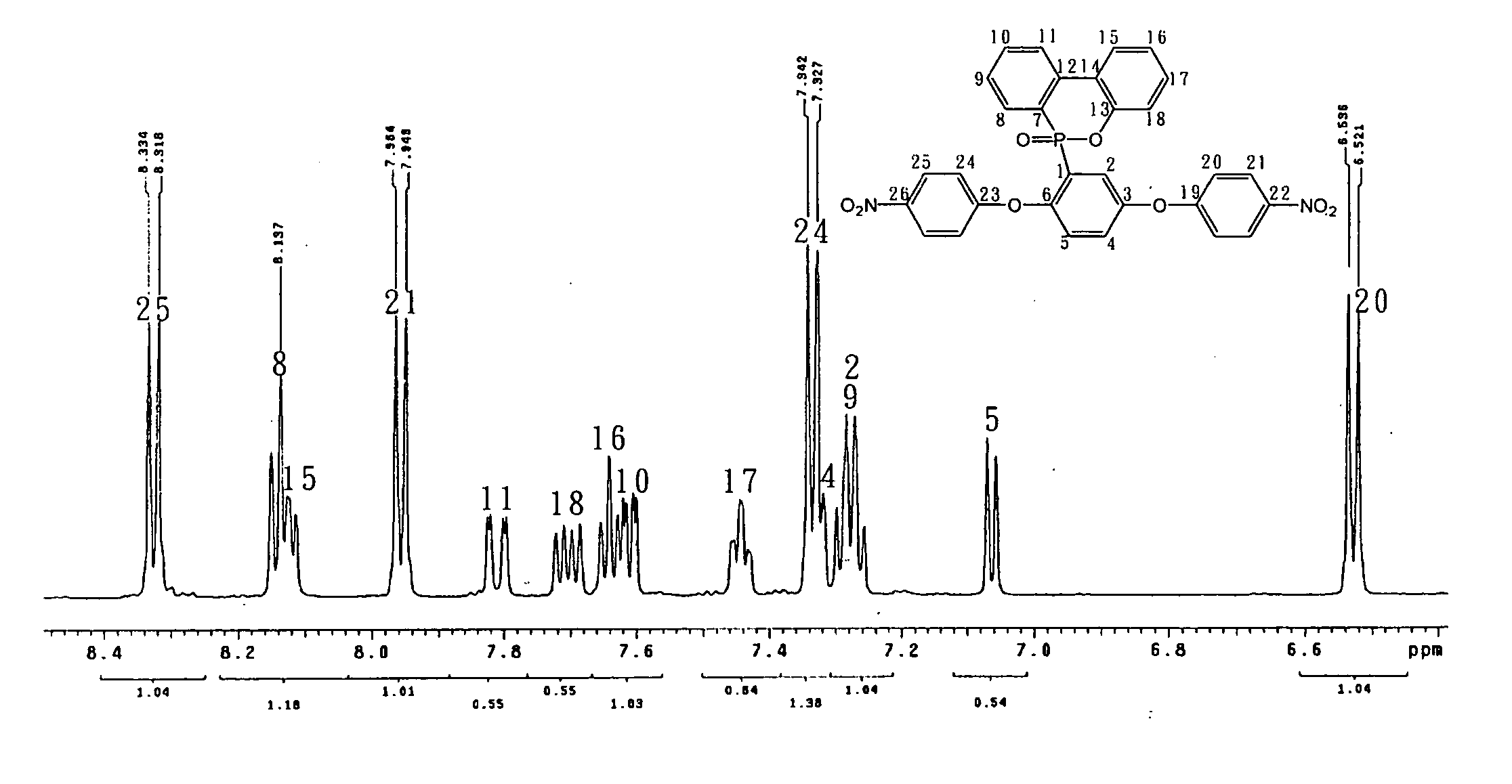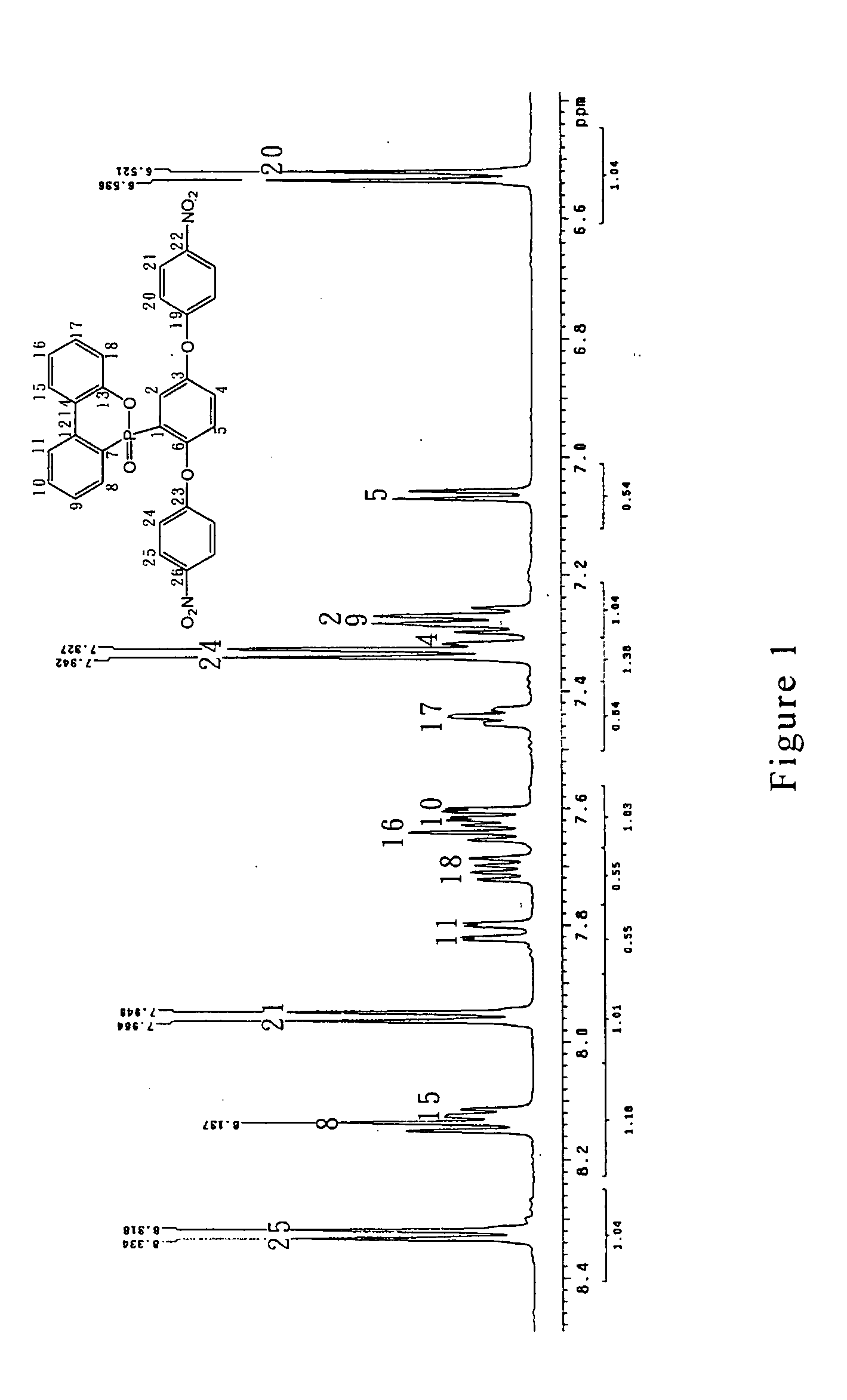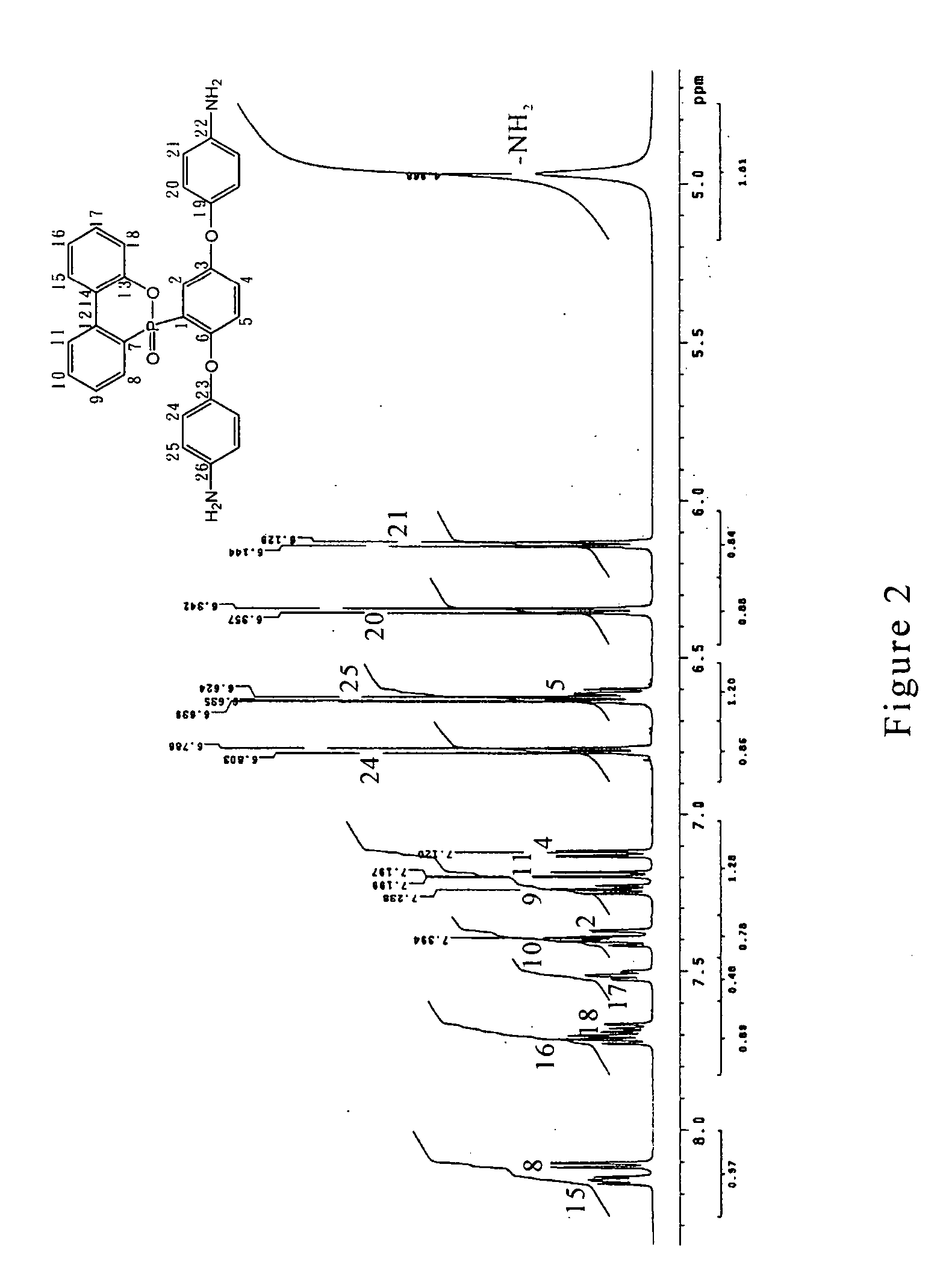Process of manufacturing DOPO derivatives for printed circuit board and low-earth orbit spacecraft applications
a technology of printed circuit board and derivatives, which is applied in the direction of printed circuit aspects, electrical equipment, organic chemistry, etc., can solve the problems of polymer material, polymer bonding, and resistance of existing commercial polymeric materials, and achieve high glass transition temperature (tg) and high decomposition temperature
- Summary
- Abstract
- Description
- Claims
- Application Information
AI Technical Summary
Benefits of technology
Problems solved by technology
Method used
Image
Examples
preparation example 1
[0032] A phosphorous-containing aromatic dinitro-compound, DOPOBQ-NB, was prepared by reacting a DOPOBQ with p-halo nitrobenzene (such as 1-fluoro-4-nitrobenzene). An exemplary synthesis strategy of the DOPOBQ-NB is shown in the following formula:
[0033] In accordance with an embodiment of the present invention, the synthesis of the DOPOBQ-NB was accomplished using the DOPOBQ monomer p-halo nitrobenzene as initiators in a solvent in the presence of a catalyst.
[0034] In the beginning, 28.5358 g (0.88 mole) of DOPOBQ, 25.0819 g (0.1778 mole) of 1-fluoro-4-nitrobenzene, 28.0711 g (0.1848 mole) of cesium fluoride (CsF) and 225.28 g N,N-dimethylacetamide (DMAc) were placed in a 500 ml flask. According to embodiments of the present invention, the reactant p-halo nitrobenzene can be 1-fluoro-4-nitrobenzene, 1-chloro-4-nitrobenzene, 1-bromo-4-nitrobenzene, or 1-iodo-4-nitrobenzene. The catalyst can be a compound composed of the elements of groups I A and VII A, such as CsF, KF, CsCl, or K...
preparation example 2
[0042] A DOPO derived diamine, DOPOBQ-AB, was prepared by reacting the DOPOBQ-NB with hydrogen to accomplish a catalytic hydrogenation. An exemplary synthesis strategy of the DOPOBQ-AB is shown in the following formula:
[0043] In accordance with an embodiment of the present invention, the synthesis of the DOPOBQ-AB was accomplished using the DOPOBQ-NB monomer as an initiator and hydrogen as a reactant in a solvent N,N-dimethylformamide (DMF) in the presence of a catalyst Pd / C. In the beginning of the synthesis of the DOPOBQ-AB, 6 g of DOPOBQ-NB, 0.1 g of Pd / C, and 50 g DMF were stirred in a 50 ml glass reactor. Nitrogen was introduced into the glass reactor and then bled from the glass reactor, and the operation was repeated at least three times. The reaction pressure was kept at 3.5 kg / cm2 for 24 hours.
[0044] The Pd / C was filtered out after the reaction was accomplished, and the remainders were titrated to 500 ml water to precipitate the product. The above-mentioned operation was...
preparation example 3
[0051] Phosphorous-containing polyimides were prepared by reacting a DOPOBQ-AB with series of dianhydrides. The phosphorous-containing polyimides have a general formula as follows:
[0052] The “R” comprises hydrogen, —CH3, —C6H5, or —CF3. The “m” is an integer of 1˜2. The “Ar” is selected from the group consisting of following formulas:
[0053] The “Y” comprises hydrogen, and C1˜C6 alkane. The “m” is an integer of 1˜2.
[0054] An exemplary synthesis strategy of the DOPO derived phosphorous-containing polyimides is shown in the following formula:
[0055] In accordance with embodiments of the present invention, the “Ar′” of dianhydrides can be (a) PMDA, (b) BTDA, (c) OPDA, (d) BPDA, (e) 6FDA, or (f) BPADA, are presented as follow:
[0056] The synthesis of the DOPO derived phosphorous-containing polyimides (5a˜5f) may be accomplished by reacting the DOPOBQ-AB monomer with various dianhydrides (a˜f) in a similar manner, an exemplary preparation process is stated in the following descript...
PUM
| Property | Measurement | Unit |
|---|---|---|
| glass transition temperature | aaaaa | aaaaa |
| cutoff wavelength | aaaaa | aaaaa |
| cutoff wavelength | aaaaa | aaaaa |
Abstract
Description
Claims
Application Information
 Login to View More
Login to View More - R&D
- Intellectual Property
- Life Sciences
- Materials
- Tech Scout
- Unparalleled Data Quality
- Higher Quality Content
- 60% Fewer Hallucinations
Browse by: Latest US Patents, China's latest patents, Technical Efficacy Thesaurus, Application Domain, Technology Topic, Popular Technical Reports.
© 2025 PatSnap. All rights reserved.Legal|Privacy policy|Modern Slavery Act Transparency Statement|Sitemap|About US| Contact US: help@patsnap.com



